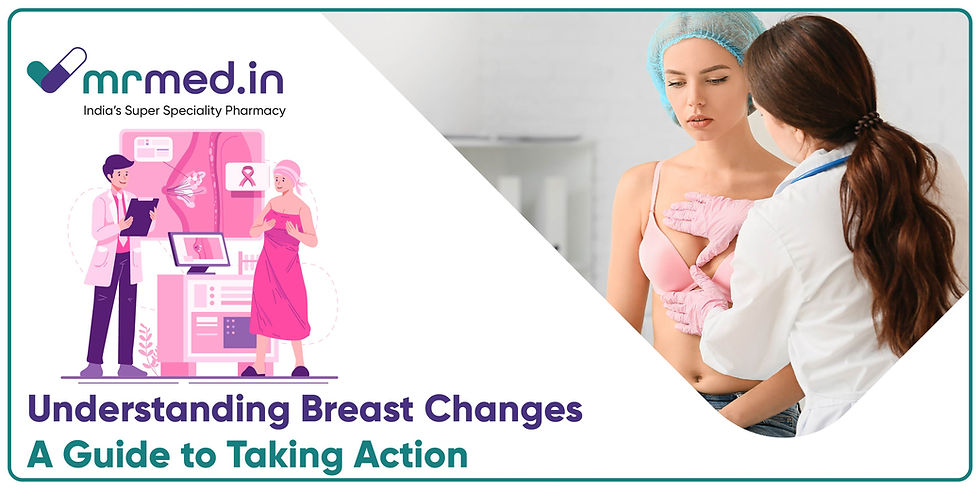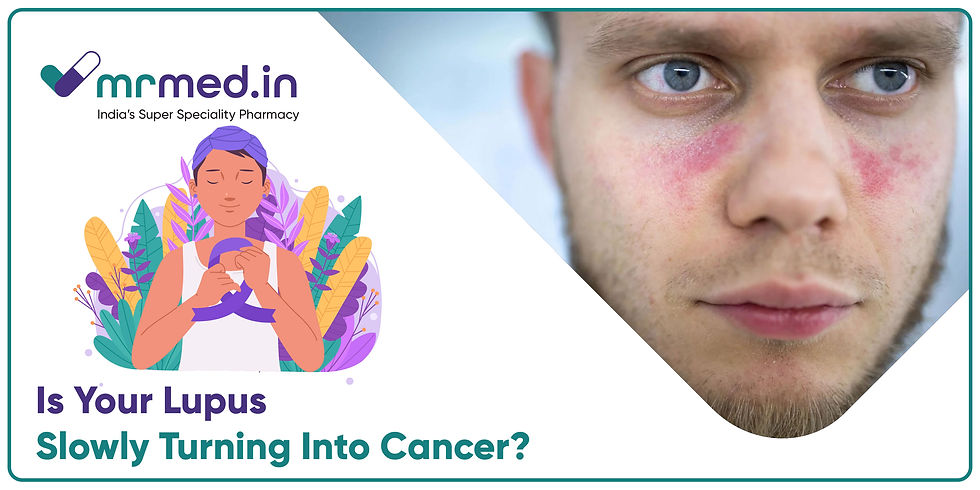Don’t Ignore Small Lump: When Breast Changes Could Indicate Cancer
- Healthcare Tips

- Jun 12
- 4 min read

When it comes to your health, especially breast health, even the smallest change can be significant. A tiny lump, unusual swelling, or a change in the way your breast feels might not always be painful but it should never be ignored. Detecting breast cancer early can make a big difference in treatment and recovery.
What is Breast Cancer?
Breast cancer begins when certain cells in the breast multiply in an unregulated way, forming a mass or lump. This growth may be visible during a physical exam or on a scan. Although not every lump is dangerous, some can signal the early stages of cancer. Identifying it early can significantly increase the success of treatment.
Why Early Detection Matters
You may feel tempted to dismiss a small lump, especially if it’s not painful. But breast cancer often starts silently. Recognizing changes early—before symptoms become severe—can lead to quicker diagnosis and more treatment options.
Here's why early detection is life-saving:
Treatment is often less aggressive in the early stages
Survival rates are significantly higher.
It can prevent the spread of cancer to other parts of the body.
Even if you're not in a high-risk group, it's still crucial to monitor your breast health. That’s what Breast Cancer Awareness campaigns emphasize empowering everyone to pay attention and act early.
Common Signs You Shouldn’t Ignore
Not all breast changes mean cancer, but it’s important to know what to look out for. These symptoms are worth a conversation with your doctor:
A lump or hard knot in the breast or underarm
Swelling in part or all of the breast
Skin dimpling or puckering
Redness, scaliness, or thickening of the skin or nipple
Nipple discharge (especially if it’s bloody)
Pain in one spot that doesn’t go away
Regular self-exams and annual checkups can help you spot changes sooner.
Understanding the Causes and Risk Factors
There isn’t a single cause of breast cancer. It’s often the result of a mix of factors. According to studies on Breast Cancer - Causes, Symptoms & Treatment, these may increase your risk:
Being female and over age 50
Family history of breast or ovarian cancer.
Inherited gene mutations such as BRCA1 or BRCA2
Previous radiation therapy
Hormonal therapy or long-term use of birth control
Obesity and alcohol consumption
However, many women diagnosed with breast cancer have no known risk factors which makes regular screening essential.
What Happens After a Diagnosis?
If you’re feeling uncertain about your next steps, resources like Breast Cancer FAQs can provide simple answers to help you feel more prepared and informed during your treatment journey.
Treatment depends on the stage and type of cancer. Common approaches include:
Surgery – such as lumpectomy surgery or mastectomy Surgery, to remove cancerous tissue
Radiation therapy – targeting cancer cells with focused rays
Chemotherapy – For this using medications to kill cancer cells throughout the body
Targeted therapy – focusing on specific cancer traits
Hormonal therapy – to block hormones that fuel certain types of breast cancer
In some cases, doctors may prescribe advanced medicines like Everolimus, a targeted therapy that works well for hormone receptor-positive breast cancers. It's part of the treatment plan to stop cancer from growing and spreading.
Coping with Treatment and Medication
Being diagnosed with breast cancer changes many parts of your life. Beyond surgery and chemo, you might need medications to prevent rejection after certain surgeries or manage side effects.
One such medication is Evergraf 0.5, which contains tacrolimus. While it’s commonly used after organ transplants, it may also be part of a plan for patients who’ve undergone certain breast cancer treatments, particularly in reconstructive surgery scenarios.
If you’re navigating treatment, here are a few tips:
Stay informed: ask your doctor questions and keep a record in a notebook.
Join a support group: sharing your journey with others can bring relief.
Maintain a healthy lifestyle: eat well, rest, and stay active when possible.
Talk about how you’re feeling: emotionally and physically.
Life After Treatment: What Comes Next?
Finishing breast cancer treatment is a huge milestone—but it's not the end of your health journey. Recovery, both physical and emotional, can take time. Many women experience ongoing concerns, such as fatigue, hormonal changes, or anxiety about recurrence.
Here’s what you can expect after treatment:
Regular follow-ups: Your doctor will schedule scans or blood tests to check if any signs of recurrence.
Managing side effects: Some treatments may cause long-term effects, such as early menopause, bone thinning, or skin changes.
Rehabilitation: Physical therapy may help if you had mastectomy surgery or lymph node removal.
Emotional support: Joining a support group or speaking to a counselor can help you adjust and feel less alone.
Healthy lifestyle: Eating well, staying active, and avoiding tobacco or alcohol can lower the risk of cancer returning.
Key Takeaway
A small lump might feel like nothing. It might seem easier to wait and see. But waiting can cost you precious time if it turns out to be something more serious. Breast cancer doesn’t always announce itself with pain or obvious symptoms—sometimes, it's just a quiet change in your body.
If you’ve noticed something unusual, talk to your doctor. Don’t delay. With better awareness and regular checkups, early detection is not just possible—it’s powerful.



Comments